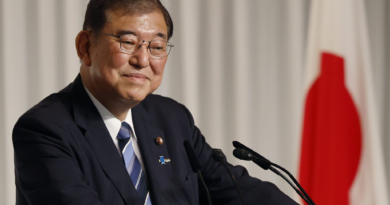The UAW and the Big Three can turn America’s 'Great Rebalancing' into a win-win for both sides. Here’s how
The United Auto Workers (UAW) was a primal David vs Goliath struggle. It triggered deeply ingrained tropes: Fat-cat, Scrooge-y bosses vs. under-paid and noble workers.
The recent strike is just one swing of the pendulum in a long struggle. For decades, the unions were losing. Membership plummeted, and support waned.
It took decades for the union movement’s brand to recover, but recover it has. Last August, a Gallup poll found that 71% of Americans approve of unions, the highest percentage since 1965. The question for the UAW is: How can it extend its economic and perceptual win to keep the momentum going?
On the other side, how can the auto industry build a narrative around the concessions it just made? This can begin the process of making the American public–especially the younger car buyers of the future– less ready to hate the auto industrial complex.
It will be a tough road ahead. Americans have always had a love-hate relationship with car companies–and that sentiment has not improved.
Cost is one reason. As analysts have noted, new cars are for well-off people–and less affluent consumers have turned to the used car market or do not own cars. If you can’t afford the industry’s cars, then it’s hard to love the industry.
Despite that reality, during the strike, the auto industry’s response was an uninspiring combination of offense (attacking UAW leader Shawn Fain for challenging the unwritten labor rules) and argumentative defense.
Automakers need a jiu-jitsu move
Now that the UAW is about to ratify the deal, the industry should seize the moment and elevate the settlement to a declaration of how much it respects and honors auto workers–trade their predictable corporate bluster for an unexpectedly humane response.
Their messaging must focus on two key audiences: younger consumers, as well as people who already own their cars. Data shows that more than half of car owners would prefer to buy from the company they purchased from previously.
To build those relationships, Detroit should praise the strikers for doing what they thought was right and standing up for what they believed in–an unexpected but necessary jiu-jitsu move.
The automakers should also speak with pride about the significant pay raises they have conceded. “We are proud to support the skilled women and men who make amazing cars right here, in America.”
Most Americans would be thrilled to get a raise of that size, and with the right framing, will be delighted that UAW members are getting it. These companies are losing the revenue anyway–they should gain the street cred.
The industry should also remind the American public of the middle class their businesses, in partnership with the unions, have built, citing objective third parties.
Of course, each auto company will need to tell this story in its own way, propelled by this narrative framework.
The union can now move on
During the strike, the UAW fell into their standard-issue spiel of corporate greed and non-living wages. Sean Fain loves wearing his “Eat the Rich” T-shirt–but data shows that “support for redistributive policies tends to be low.”
Fain must rise above his opposition stance and seize this moment to leave divisiveness behind. This is an opportunity to strategically link the union’s success to America’s “great rebalancing.” Wherever you look, power is de-concentrating at the top: Employees are demanding remote work. Unions are organizing at Amazon and Starbucks. Hollywood actors are on strike. Children are suing energy giants. Millions are speaking up for social and climate justice.
The settlements reached with automakers must feed into that narrative: “We did our part by taking on the Big Three, which is why more than half of Americans support us. Our country is changing, and the UAW respects management for being tuned into this new reality.”
In short, position the union as a culture changer. Declare that the fight for higher wages, work-life balance, and a shorter workweek is not just auto workers’ fight–it’s everyone’s. Remind people of what history has shown: “When we fight for ourselves, you are more likely to get what you want.”
These new narratives will allow both sides to move beyond divisiveness–and achieve unity. The industry gets to take credit for its concessions and the union links its success to larger social forces. America wants and needs that. Vicious political debates have triggered a widespread chronic polarization fatigue syndrome.
Yes, it’s easier said than done. It’s tough for the UAW and the Big Three to get there because their leadership has grown up in an us vs. them environment. Today, it’s time to replace these calcified narratives with consensus thinking.
Adam Hanft is a brand strategist who advises Fortune 500 companies, some of the world’s most innovative startups, and world leaders.
More must-read commentary published by Fortune:
The opinions expressed in Fortune.com commentary pieces are solely the views of their authors and do not necessarily reflect the opinions and beliefs of Fortune.


